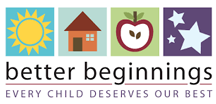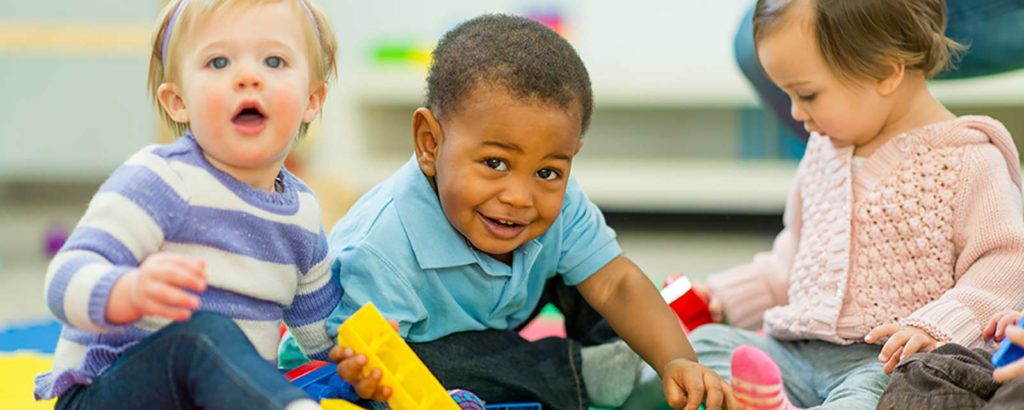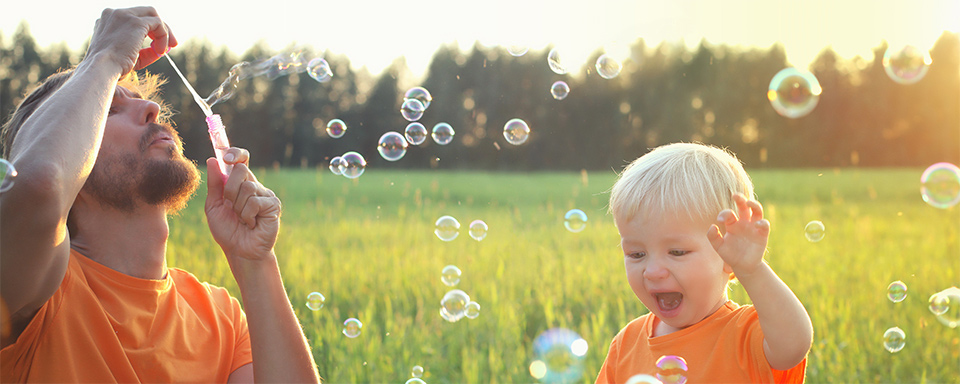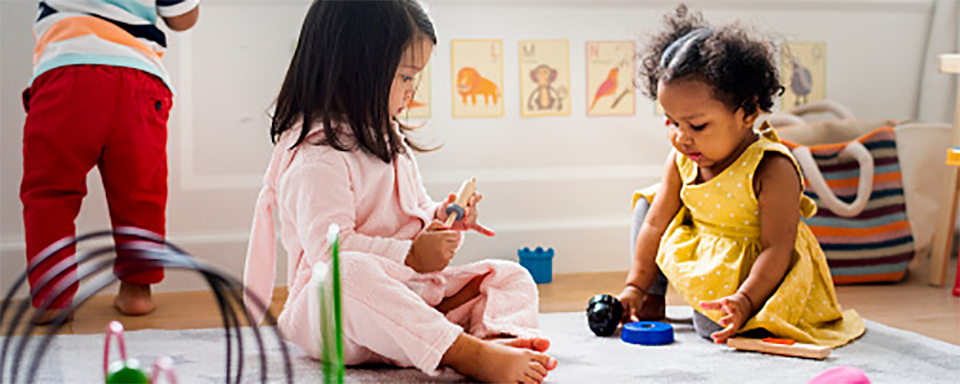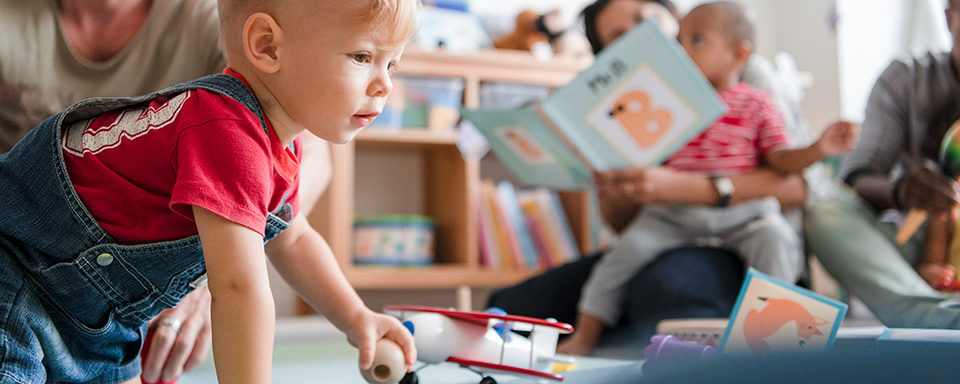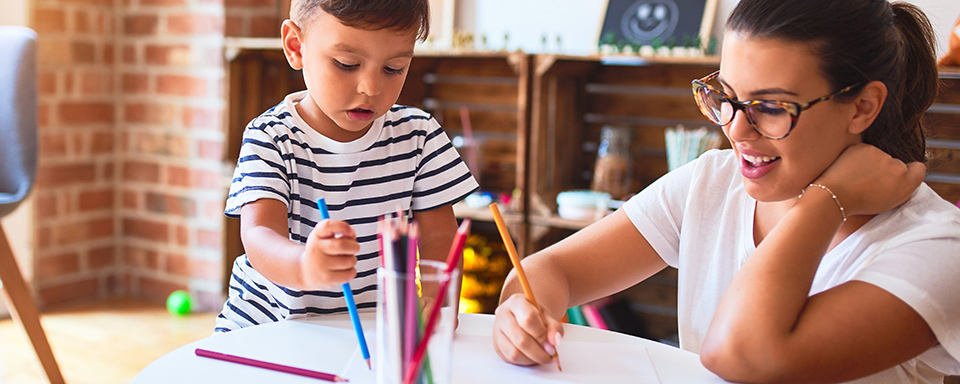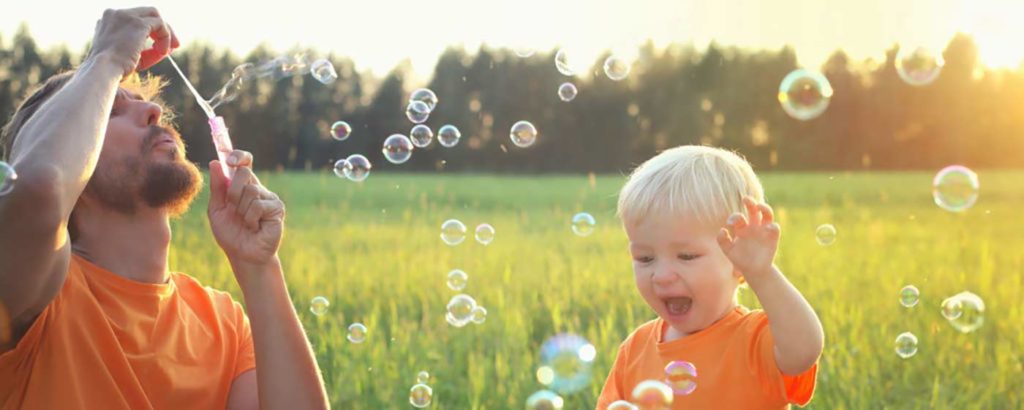Give your child daily opportunities to use large muscles.
Focus on Kindergarten Readiness Indicators
- Gallops, slides, hops, leaps, and skips
- Steers a tricycle or other ride-on toys
- Balances on a beam or stands on one leg
- Catches a ball with both hands
- Tosses or throws a ball
- Kicks a moving ball while running
Activities by week
WEEK 1
Collect safe toys and equipment to help your child develop large muscles.
- Provide a variety of materials
- Hoops (hula hoops) found at discount or dollar stores
- Empty water bottles to use as bowling pins
- Bean bags or bean socks (Make bean socks by partially filling a sock with beans and tying a knot in the sock.)
- Tricycle to steer and pedal
- Balls for throwing, catching, and bouncing (9- to 12-inch rubber balls), beach balls
- Basketball hoop at a height child can reach with a ball
WEEK 2
Let your child spend time outdoors and have the space and freedom to use large muscles.
- Have a safe outdoor place for your child to run and play; your yard or a nearby park, for example.
- Give them a variety of balls to kick.
- Hang a hula hoop from a limb so that your child can throw a ball through the hoop.
- Encourage your child to pedal a tricycle.
- Hang a basketball hoop low enough so your child can successfully make a basket.
WEEK 3
Give your child opportunities to use large muscles indoors.
- Invite your child to toss bean bags into a basket, a hoop, or a masking tape circle on the floor.
- Put the bean bags in a small basket. Place the basket on your child’s head and ask them to walk to promote balance.
- Create an obstacle course in a room with space for moving. Include a taped line to walk on, a table to crawl under, chairs to crawl through, a book to jump over, and a large box to crawl through.
- Suggest that your child move like different animals: hop like a rabbit, slither like a snake, crawl like a bug, and fly like a bird.
WEEK 4
Join your child in active play.
- Play toss and catch with your child using 9- to 12-inch rubber balls.
- Set up an obstacle course and encourage your child to steer a tricycle through it. Milk jugs weighted down with sand or rocks can be used to mark the course.
- Draw a hopscotch pattern on your patio or driveway (if safe). Show your child how to hop the pattern. Let your child hop according to his or her ability. Using stones or markers to play the game is a skill for older children.
- Recall singing games from your childhood such as the “Hokey Pokey,” and involve your child and other family members in playing the game.
Additional Ideas
Go through your collection of music. Select the songs that encourage your child to use large muscles to march, hop, bend, and sway. Songs like “Freeze Game” offer a variety of skills to try, such as skipping and hopping. Try different songs to find your child’s favorites. Join your child in moving to the music. YouTube and Spotify offer a variety of music to get your child moving!
Special Activity
In the “Memories of Our Year” section of the calendar, write “How I Use My Large Muscles.” Take your child on a walk in the rain and encourage different movements, such as jumping over a puddle or jumping from one puddle to the next. Ask your child to hop on one leg in a puddle or to count all the puddles. Talk about what happens when your child jumps in the puddle. Take pictures of the walk and add these to your memory book.
Suggested Books to Read with Your Child
From Head to Toe by Eric Carle
Miss Mary Mack by Mary Ann Hoberman, Nadine Bernard Westcott, illustrator
Quick as a Cricket by Audrey Wood, Don Wood, illustrator
Shake My Sillies Out by Raffi, David Allender, illustrator
Skip to My Lou by Mary Ann Hoberman, Nadine Bernard Westcott, illustrator
